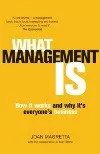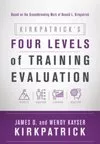
-
 Anglický jazyk
Anglický jazyk
Islamic Investments. An Overview and Comparison of Islamic Indices
Autor: Arthur Ritter
Research Paper (postgraduate) from the year 2015 in the subject Business economics - Investment and Finance, grade: 18, University of St Andrews (School of Management), course: Alternative Investments, language: English, abstract: The following industry... Viac o knihe
Na objednávku
17.55 €
bežná cena: 19.50 €
O knihe
Research Paper (postgraduate) from the year 2015 in the subject Business economics - Investment and Finance, grade: 18, University of St Andrews (School of Management), course: Alternative Investments, language: English, abstract: The following industry and market analysis is primarily based on the most recent Islamic Financial Services Industry Stability Report (2014) provided by the Islamic Financial Services Board.
The total amount of assets in the Islamic financial industry was approximately $1.8 trillion by the end of 2013. The Islamic financial industry includes 4 major subcategories, Islamic banking, Sukuk (Islamic capital markets), Takaful (Islamic insurance) and Islamic Microfinance.
By far the largest subcategory is Islamic banking with an estimate of 80% of all assets. The remaining 20% split up to Sukuk $245.3 billion, Islamic funds $68.9 billion and Takaful $18.3 billion. The Islamic financial industry is still very small in comparison to the traditional industry, however it is one of the fastest growing sectors with an Compound Annual Growth Rate (CAGR) of 17,04% between the years of 2009 and 2013. The growth in the Islamic banking industry was, on average, 20% after the recovery of the global financial crisis in 2009. Most of the assets are concentrated in Islamic countries like Gulf Cooperation Council and Malaysia. Beside these major players, other countries in the Middle East or North Africa showed a rapid growth or entered the market.
Further growth, mentioned by Iqbal and Tsubota (2006), is also expected because of the increasing demand of Sharia compliant investments and financing due to the growth of "oiladollars" and the immigration of Muslim people all over the world.
The specialty of the regulatory framework for Islamic investments is that they all have to be Shariah confirm. The main principals for Islamic investments are (AlaSuwailem,'2006):
. It is not allowed to invest money only for the sole purpose of profit.
. The concept of interest (Riba) is not allowed
. It is only allowed to invest in companies, which are Shariah confirm (alcohol, weapons, pornography, gambling, etc. are prohibited by the Shariah)
. Gambling as itself is not allowed
. No high uncertainty/risk (Gharar) can be taken
. And the risk must always be shared between the lender and the borrower
One of the important differences between conventional finance and Islamic finance, as far as risk is concerned, is that in Islamic finance the risk must be split between borrower and lender and very high risk investments like short selling and high leverage is not allowed.
- Vydavateľstvo: GRIN Verlag
- Rok vydania: 2015
- Formát: Paperback
- Rozmer: 210 x 148 mm
- Jazyk: Anglický jazyk
- ISBN: 9783656956327











